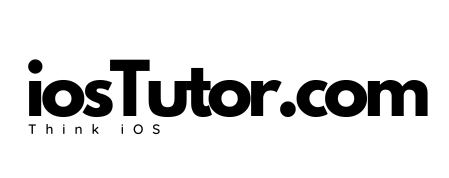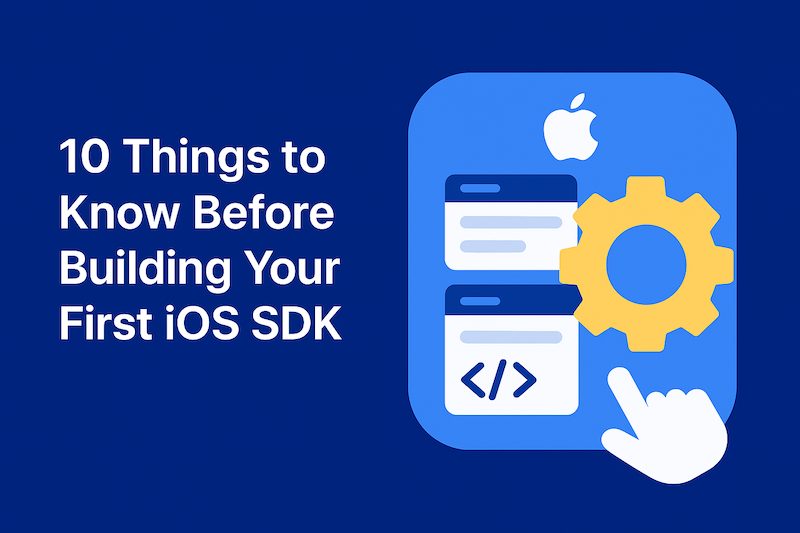Building an iOS SDK is not just about writing code — it’s about creating a developer friendly product. Your “customers” are not end-users but other developers. If integration feels clunky, they’ll drop it fast.
Here are 10 essential lessons (with examples) to make your SDK modular, secure, and developer-friendly.
1. Architecture & Code Design
- Modularity – Keep SDK logic self-contained and independent of the host app.
- Public API Surface – Expose only what’s necessary; keep everything else internal.
- Loose Coupling – Use protocols and dependency injection for flexibility.
- Versioning Strategy – Follow semantic versioning (MAJOR.MINOR.PATCH).
❌ Bad Example (Non-Modular SDK)
// Inside SDK
class PaymentSDK {
func startPayment(using viewController: UIViewController, amount: Double) {
// Directly depending on the app's CheckoutViewController
let checkoutVC = CheckoutViewController() // <- App-specific
checkoutVC.amount = amount
viewController.present(checkoutVC, animated: true)
}
}Problems:
- Relies on the app’s own controller (
CheckoutViewController). - Breaks if the host app renames or changes that flow.
- Not reusable across multiple apps.
✅ Good Example (Modular SDK)
// Inside SDK
public protocol PaymentDelegate: AnyObject {
func paymentDidSucceed(transactionId: String)
func paymentDidFail(error: Error)
}
public class PaymentSDK {
public weak var delegate: PaymentDelegate?
public init() {}
public func startPayment(amount: Double) {
// Self-contained logic
print("Processing payment of \(amount)")
// Simulate success
delegate?.paymentDidSucceed(transactionId: "ID after transaction")
}
}And inside the App:
class CheckoutViewController: UIViewController, PaymentDelegate {
let paymentSDK = PaymentSDK()
override func viewDidLoad() {
super.viewDidLoad()
paymentSDK.delegate = self
}
func makePayment() {
paymentSDK.startPayment(amount: 100.0)
}
// MARK: - PaymentDelegate
func paymentDidSucceed(transactionId: String) {
print("Payment success: \(transactionId)")
}
func paymentDidFail(error: Error) {
print("Payment failed: \(error.localizedDescription)")
}
}Key Differences:
- SDK is reusable — no tight coupling.
- Communication happens via delegates/protocols.
- SDK logic is independent of app-specific UI.
2. Integration & Distribution
Offer multiple integration methods:
- Swift Package Manager (SPM)
- CocoaPods
- XCFramework for manual installation
👉 Always provide a clear installation guide with step-by-step instructions and code samples. Keep your SDK lightweight, avoiding large binaries or unnecessary dependencies.
3. Compatibility
- Define minimum iOS deployment target (e.g., iOS 12+).
- Support multiple architectures (arm64, simulator slices).
- Provide Objective-C interoperability if you want wider adoption.
4. Security
- Never store sensitive data in plain text.
- Use Keychain for secrets.
- Validate server communication (SSL Pinning recommended).
- Hide internal logic — only expose safe APIs.
- Consider code obfuscation for sensitive SDKs.
Example: Code Obfuscation
Without obfuscation, binaries can be reverse-engineered:
func verifyPaymentToken(token: String) -> BoolAfter obfuscation (using tools like SwiftShield):
func a1B2c3(token: String) -> BoolThis makes reverse-engineering much harder.
5. Performance
- Keep memory usage minimal.
- Run heavy operations off the main thread.
- Profile with Instruments before release.
- Avoid blocking the UI loop.
6. Error Handling
- Use enums for clear error codes:
enum SDKError: Error {
case networkFailure
case invalidResponse
}- Provide developer-friendly error messages.
- Avoid force-unwrapping (
!).
7. Documentation
Every SDK should include:
- README with setup and usage guide
- API Reference with
///doc comments - Inline code comments
- Example project to demonstrate real-world usage
8. Testing
- Unit Tests for all public methods.
- Integration Tests with real app flows.
- CI/CD pipelines to test across devices & iOS versions.
- Ensure backward compatibility on updates.
9. Analytics & Logging
- Provide optional logging for debugging.
- Use log levels (
info,debug,error). - Make analytics opt-in only (respect privacy).
10. Maintenance & Upgrades
Always have a deprecation strategy:
@available(*, deprecated, message: "Use processPayment(_:) instead.")
func oldProcessPayment(_ payment: Payment) {
processPayment(payment) // Call new implementation
}- Communicate deprecation in release notes & docs.
- Give developers a migration window.
- Remove old APIs only in a major release (semantic versioning).
Final Thoughts
Building an iOS SDK is about more than just code — it’s about building trust with developers.
Keep your SDK modular, secure, and easy to integrate. Write great docs, test it well, and think of it as a product experience. If you do, developers will love adopting it, and your SDK will stand the test of time.

